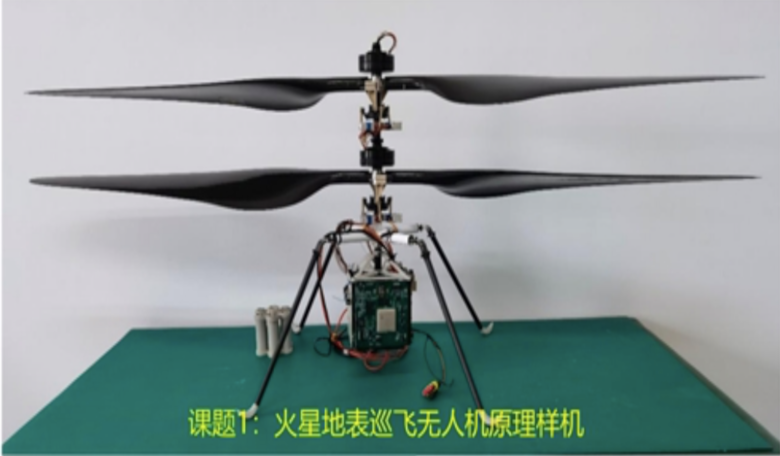China could send a small rotorcraft to Mars similar in design to NASA’s Ingenuity helicopter, after a prototype of a “Mars cruise drone” passed a final acceptance review, said officials at China’s National Space Science Center (NSSC) last week.
The drone, one of three space-related projects the NSSC passed, bears a striking resemblance to Ingenuity, NASA’s shoe box-sized helicopter with four outstretched wiry legs, and two rotors stacked atop each other.
Currently about to make its thirteenth flight this weekend, Ingenuity was only supposed to fly five times, but having surpassed all expectations the tiny helicopter has now had its mission extended indefinitely.
During its twelfth flight Ingenuity covered 450 metres (1,476 feet) of Martian ground in 169.5 seconds and took 10 pictures.
For its next flight that will take place no earlier than Saturday at 5:08 pm PDT, or 12:04 LMST (local Mars time), the Ingenuity team hope the helicopter will cover about 210 meters (690 feet) in around 161 seconds and take 10 pictures pointing southwest. These will add to the 72 13-megapixel colour images and 1,390 black-and-white navigation camera images it has already taken so far.
Despite the engineering difficulties encountered by the Ingenuity team throughout its mission, having a drone on Mars to scout ahead of its rover has clearly paid off.
Recently, photos taken by Ingenuity during its last flight showed that a region dubbed South Seitha was of less interest than scientists had hoped. As a result, the rover might not be sent there, says the Perseverance science team.
Few details about what China’s own Mars’ helicopter will be equipped with have been mentioned, other than that a micro spectrometer is also under development.
Led by researcher Bian Chunjiang, Key Laboratory of Electronic Information Technology for Complex Aerospace Systems at the Space Center under the banner of “Mars surface patrol spectroscopic exploration”, the micro spectrometer will presumably be attached to the drone so that it can take measurements of the wavelength and frequency of light emitted from the martian terrain.
Along with the drone, two other projects also passed the final acceptance by the NSSC. These include an extreme ultraviolet lens for solar storm imaging, and other radiation and radar prototypes to provide technical support for China’s space target cataloging capabilities.
All in all, China says scientific research teams at its National Space Science Laboratory Cultivation Project are supporting 17 topics around the two major themes of space exploration and space safety.
In addition to the cultivation of basic innovation, and breakthroughs in key technologies, the research teams have become ‘a key engine for the space center to accelerate the creation of a national "dream team" in the field of space science’, says the NSSC.











